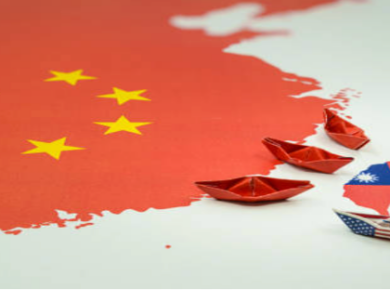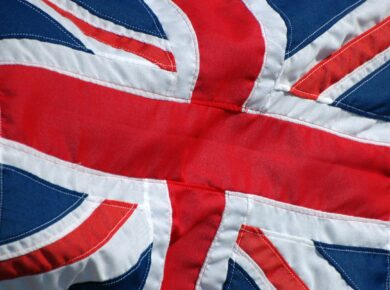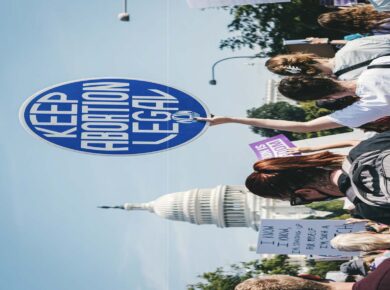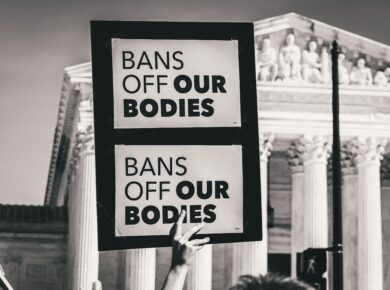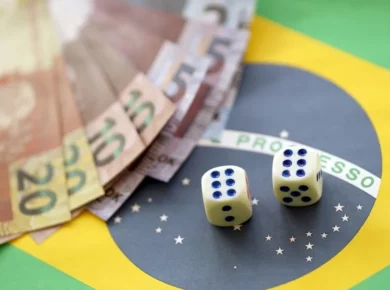Disclaimer: This blog post solely reflects the opinion of the authors and should not be taken to represent the general views of IPPR’s management team or those of fellow authors.
Copyright: Neil Hall/EPA
Thousands of miles away from its original location overlooking the ocean, Hoa Hakananai’a has now been at the British Museum for over 150 years. The moai, whose Rapa Nui name poetically translates to lost or stolen friend, was brought to the British Isles after the HMS Topaze expedition to the island – also referred to by its colonial name of Easter Island – removed it without the permission of the Rapa Nui to gift it to Queen Victoria in 1868. After these ships left Rapa Nui’s shore, colonialism continued to decimate its indigenous population through contagious diseases, slavery, and land seizure. Thousands of Rapa Nui artefacts, with the moai being the most emblematic, scattered around the world in the expansive collections of museums across the United Kingdom, Belgium, and New Zealand. This material diaspora is currently increasingly scrutinized, with reports calling on France to return its loot and actually starting to follow up on this as the successful claims of Benin show. However often these calls for repatriation are seen as a frivolous affair in comparison to other, more serious issues of sustainability and development. The case of Hoa Hakananai’a shows that this distinction does not hold, and that the return of those wrongfully taken artifacts is at its core a human rights issue.
Many large Western museums still firmly hold on to their collections with grand claims of the universal or encyclopedic museum. This notion props up western institutions like the British Museum or the Louvre as educational halls displaying to a vast audience all that the world has to offer. However the educational purposes have to be problematized, as the artifacts on display (and a majority of their collections are not on display) are decontextualized from their location, their function is distorted for a tourist gaze, and the information accompanying them too often is without input of its original creators or custodians. Even if these museums would be able to provide the most inclusive and multinational education to large audiences, the overrepresentation of these palaces of culture in the west would still call for a global redistribution to increase the access to this heralded knowledge. A stronger argument against repatriation is that, as the Rapa Nui Pedro Edmunds Paoa has said, the statues would be ignored and forgotten. Worse still, returning the moai would expose the volcanic stone statues to tropical rains, adventurous visitors, and farm animals, ultimately leading to the destruction of the statues. The British Museum has the proper technological tools to ensure these statues can remain for many future generations. As this technology is already known, this argument could be countered that these artifacts should still be globally redistributed and returned, alongside the sharing of relevant technologies to indeed conserve what is proclaimed to be universal heritage.
The core arguments in favor of returning the moai to Rapa Nui center the spiritual and cultural significance of the statues. When the delegation of Rapa Nui visited the British Museum in late 2018, governor Tarita Alarcon Rapu said “We are just a body. You, the British people, have our soul.” To many Rapa Nui the moai carry the spirits of ancestors and are considered a continuous living reincarnation of past relatives. Anakena Manutomatoma, a member of the Rapa Nui development commission, explains that “we want the museum to understand that the moai are our family, not just rocks. For us [Hoa Hakananai’a] is a brother; but for them it is a souvenir or an attraction.” The significance of Hoa Hakananai’a as a living person relevant to the Rapa Nui community is inherently at odds with western notions of heritage as embodied by the British Museum. The disembodied display, removed from other moai and rituals allowing the artifact to change and grow, constitute a different meaning of the object. This is important because it means that the Rapa Nui and the British Museum are at odds regarding what constitutes the debate. This is why Paz Zarate, a legal practitioner with experience in cases like this before the International Court of Justice, urges that the moai be treated as human remains rather than an object, similar to what is already the case under Chilean law, which includes Rapa Nui in its jurisdiction. This would acknowledge and incorporate indigenous Rapa Nui definitions of Hoa Hakananai’a and could realign the conversation between the islanders and the museum. It is important to note that the Rapa Nui have also already attempted to compromise in this dispute, by proposing to trade Hoa Hakananai’a for a newly carved moai by Bene Tuki. This would fill the absence on Rapa Nui, while maintaining an ambassadorial Rapa Nui presence in the British Museum through a voluntarily and appropriate inclusion of the islanders’ culture and consent in the global story the British Museum is attempting to tell.
This is evidently a human rights issue as it attempts to rectify past injustices, during which the Rapa Nui were deprived of their sovereignty over their land and cultural practices. But returning the statue would do more than rectifying an historical wrong. It would enable more effective localized realization of the Sustainable Development Goals. For example the return of the Hoa Hakananai’a allows for enhanced indigenous education efforts centering local achievements and imbue Rapa Nui children with senses of ownership and pride of their culture, in line with the United Nations recommendation to ensure Indigenous communities control their own education. The right to education itself would be strengthened, but it would also connect to larger processes of culture revitalization ensuring the partial fulfilment of articles 22 and 28 regarding access to and enjoyment of the culture of one’s own community. This is not to claim that the repatriation of Hoa Hakananai’a would automatically alleviate the ecological degradation and socio-economic inequalities Rapa Nui are currently facing, but that repatriation is more that correcting a previous injustice. The return would also challenge current status quo conceptions of art repatriation, which are largely confined to intra-state relations, to include and focus on indigenous communities which often do not constitute a sovereign state as understood by the United Nations. It would remove these artifacts from conversations that reduce them to economic bargaining chips connected to museum marketability and revenue, and instead acknowledge the specific indigenous relationality to items like Hoa Hakananai’a, and the cultural importance they are infused with. Although only a small step in the grand scheme of decolonization needs of and efforts from indigenous peoples, returning these artifacts strengthens indigenous autonomy and is the least we as descendants from colonizers can do. Unfortunately, the British Museum currently has only opened the avenue of loans of artifacts, perpetuating the harm which caused the Hoa Hakananai’a to be so far from home in the first place.
